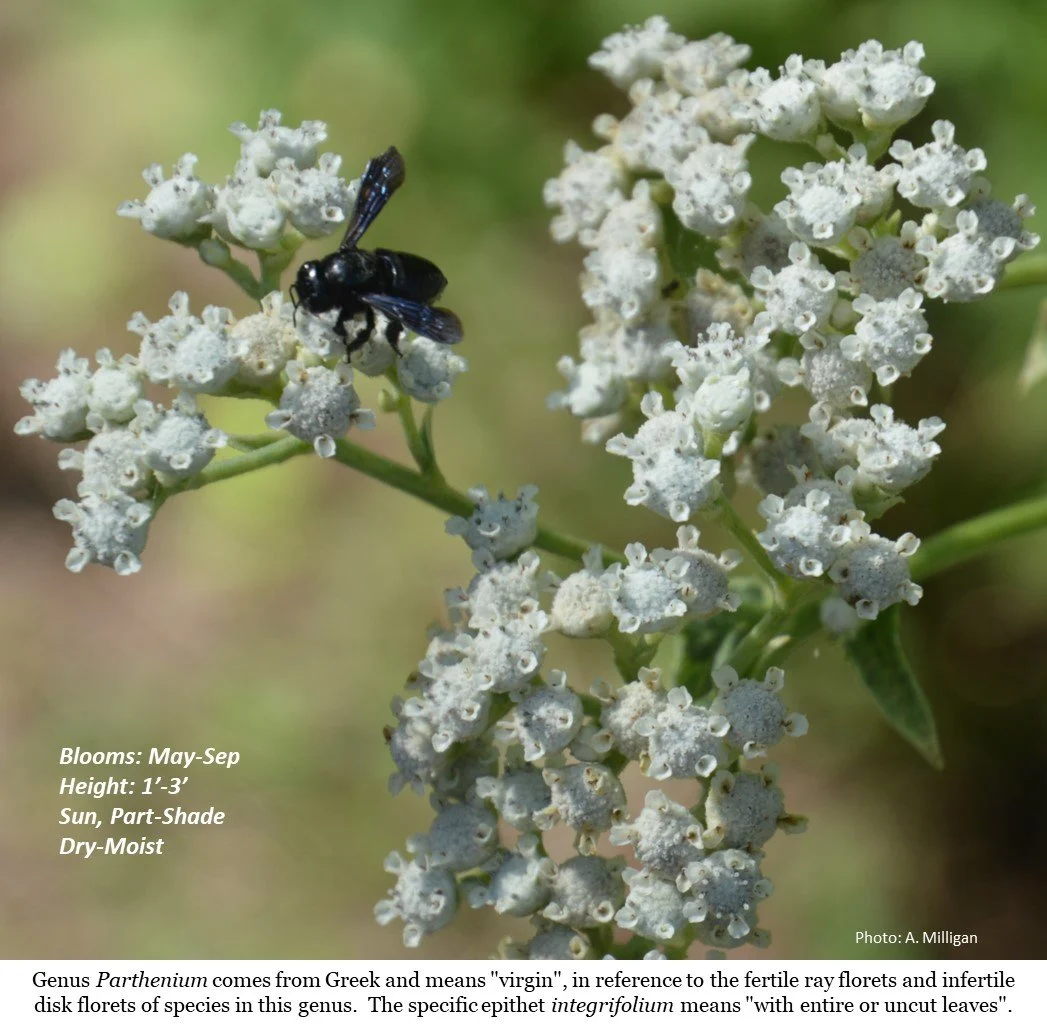Latin for Gardeners
July’s Native Maryland Plant
Parthenium integrifolium L.
(par-THEE-nee-um in-teg-ree-FOH-lee-um)
Common Name: Wild Quinine, Wild feverfew
Summer is here, and with it, increasingly high temperatures and humidity – oh my! I’m looking forward to watching the many pollinators in my yard from a shady position, but I’ll avoid working in the garden during these extremely hot months – I know the heat index (the apparent temperature) will make it dangerous on some days. Fortunately, the Parthenium integrifolium planted in my wildflower garden continues to thrive in full sun, seemingly having no problem handling the heat or drought – or even the many cottontail rabbits that have taken up residence in my yard.
Wild quinine is an uncommon plant to find in residential pollinator gardens, but it shouldn’t be – it’s a magnet for many insects and a well-behaved companion plant for many other more familiar pollinator plants. This plant is easy to identify, it’s a clump-forming, native perennial with a dense corymbiform¹ inflorescence, giving it a mostly flat-topped appearance. Its alternate, generally lance to egg-shaped leaves are coarsely serrated, rough in texture and bitter in taste, making them less palatable to herbivores. The long-lasting flowers are at first densely packed and resemble cauliflower. Over time they spread out and bloom, showing off their composite flower - a disk with ray florets; the infertile disks serve as perfect landing pads for pollinators seeking the pollen and nectar within the rays. Below ground they have a fleshy tap root that gives them their drought-tolerance. They slowly spread by self- seeding or by rhizomes – my small patch has grown only slightly over 5 years.
On any given summer day, I can observe Parthenium integrifolium and the variety of mostly tiny insects that enjoy its pollen and nectar. I find the numbers a bit surprising since it’s such a small, modest flower, having only 5 (sometimes 6) fertile rays - yet it is always covered with beneficial insects, including a variety of hoverfly and beneficial wasps; skippers, butterflies and hummingbird moths are less frequent visitors but always a pleasant surprise. The diversity of bees is also notable with sweat and mining bees being the most common ones I’ve recorded.
Wild quinine has a long history as a medicinal plant. It was used as an alternate malaria treatment during World War I – helping to reduce fever (hence its common name). Native tribes and early settlers used its leaves to create a poultice to treat burns.
On a warming planet, it’s becoming more of a challenge to avoid the burning rays of the sun and overheating, especially on the hottest days of summer. It’s also challenging the native plants that fauna rely on for sustenance. As you contemplate the next plant to add to your full sun garden, consider adding a plant that can tolerate the heat and humidity, withstand drought and has high value for many pollinators. Consider adding Parthenium integrifolium, a climate-wise, garden worthy plant.
Stay safe everyone!
¹ - the flowers grow in a way that brings them all to a common level.
Alison Milligan – MG/MN 2013
Watershed Steward Class 7/CBLP
aligmilligan@gmail.com





